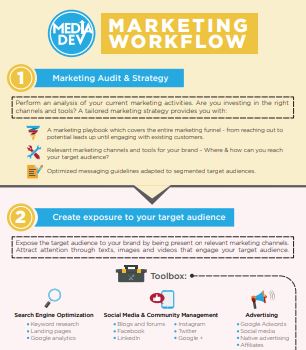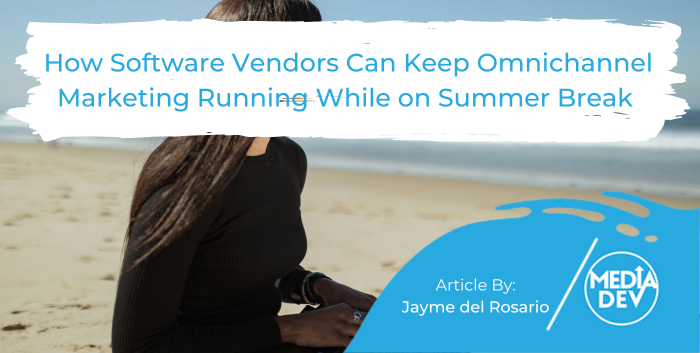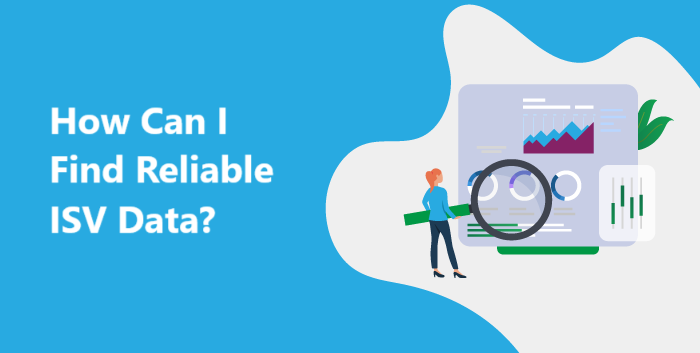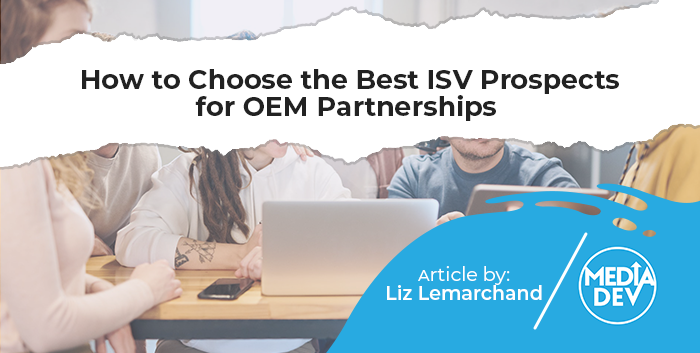What is holistic marketing and why is it important?
A holistic marketing approach is a marketing concept that turns potential buyers into actual clients or partners through a series of crucial steps. The key to a successful marketing strategy is to accommodate prospects throughout their buyer journey. Looking at this from a digital marketing perspective, there are a lot of companies that do have a strategy to attract visitors to their website (ads, Facebook, LinkedIn, SEO, etc.), but they do not have a strategy in place to turn those website visitors into actual paying customers or partners. With a holistic marketing approach, you go beyond just broadcasting and you support buyers throughout the buyer journey. That makes lead generation for software companies more efficient and will result in a higher return on your marketing investments.
The 4 phases of the buyer journey
There are 4 main phases a buyer typically goes through. This journey applies to buyers of any kind of product or service.
- Awareness: A buyer becomes aware of a certain need. From a marketing standpoint, you will have to expose your brand so that buyers in this phase know you can help with their needs. You can use a mix of on and offline marketing tactics to reach your audience.
- Consideration: A buyer starts comparing and evaluating different solutions that satisfy their need. As a marketer, you will have to capture contact details to stay in touch with potential customers (marketing qualified lead). It is important to stay in touch with leads to be able to educate them about your solution and brand while they evaluate their options.
- Decision: After weighing the options, the buyer decides what solution to go for. Combine all the information you’ve gathered on your buyer and package that up into the best offer you can make. That means the offer will be specific and tailored to your lead, which puts you in front of competitors.
- Evaluation: This is where the buyer reviews whether they are happy with the solution you provided. As a seller you try to keep the relationship that you’ve built up with the buyer alive so that your buyers recommend you to others and of course, you try to upsell additional products or services along the way.
The length of the buyer’s journey completely depends on your product. If we are looking at everyday consumer goods, the cycle is relatively short (could be seconds). If we are talking about complex B2B partnerships the process can last over a year. With holistic marketing, we pay attention to all phases of the buyer journey to make sure that we achieve the maximum return on investment.
Why is educating prospects about your brand important?
The consideration phase is where prospects try to find out which solution or vendor is the right choice for them. In general, the more complex a solution is, the harder it is for a prospect to gain insights and come to a decision. As a vendor, it is important to get across what your solution and company are about so that a prospect fully understands the benefits that you are offering. Once a prospect understands your company and offer you will have an advantage when the prospect is ready to make a decision.
In a competitive market environment where product features and capabilities are roughly equal, it becomes crucial to not only highlight the benefits of your product, but also the personality of your brand. Things like corporate culture, social projects that your company is involved in and overall brand image play a big role in the decision. People just want to work with somebody who they are comfortable with. Educating prospects about your brand is something you can do in various ways. You could think of whitepapers, clear landing pages, webinars, brochures, or even consultation meetings.
What would you say to a company that only wants sales meetings as a deliverable?
Everybody agrees that calculating marketing ROI is important to measure success. One way to measure this is by the number of sales meetings. Very often businesses measure marketing success by the number of sales meetings generated, and for the sales team, they measure the number of deals that came out of those meetings.
This is a very abstract approach and the KPIs need more refinement to determine the real impact of both marketing and sales. For example; a marketing team could meet their goals in terms of sales appointments. However, if all of those meetings don’t turn into any sales, it is safe to say the quality of those meetings was just not good enough. Therefore, it is very important to add KPIs to assess the quality of a lead or sales meeting. In addition, some marketing activities take time to build up before they show return. It’s not always fair to say that a marketing initiative is not successful if it hasn’t generated a certain number of sales meetings just after a few months after implementation.
A few ways to quantify investment in education or lead nurturing besides a direct sale are:
Lead nurturing
- The amount touch points – how many times have been in touch with a lead?
- The amount of content consumed – what content has a lead looked at?
- Understanding the need of the lead – what information has the lead provided us with?
The decision-making cycle
- Who makes the decision and holds the budget?
- How far up the chain of command are we?
- What is necessary to convince the decision maker?
When we have an answer to all of these questions, we are able to identify the leads that hold the most potential. These insights into your lead generation process will provide your sales team with meetings that are much more likely to have a positive outcome.
Why is content important as a marketing tool?
A content marketing strategy is a must-have for B2B software companies because it is so versatile and can be used throughout all phases of the buyer journey. It’s a great way to attract new prospects through blogs, videos, posts, and social media. At the same time content gives you the opportunity to provide value. With content like whitepapers, webinars, or articles, you educate your target audience and work on becoming a thought leader within your industry. The value you provide with these types of content puts your company ahead when a lead is making the purchasing decision. This is exactly why content should always be an integral part of your holistic strategy.
How can sponsored ads boost visibility for your content?
When you’re creating all these types of great content, of course, you want to get that in front of your target audience. However, exposing your content organically takes time. Implementing strategies like SEO and organic social media exposure doesn’t work instantly and only becomes effective over time. Paid advertisements give you the opportunity to get content in front of your audience right off the bat. That’s a super big benefit when you are looking for short-term results, and if you get your advertisement campaign profitable it can even become part of a long-term strategy.
Today, advertisement platforms help you to target your audience super precisely. Google and LinkedIn offer robust targeting tools that can exactly pinpoint your target audience for B2B advertisements. You can select key factors like industries, company size, job title, and interests of people. This makes running ads more efficient and a viable source of finding new prospects.
Another benefit of ads is that they allow you to promote your brand in places that you can’t reach organically. Industry publications or online events often offer advertisement space on their website in the form of banners, native sponsored content, or sponsorship of their newsletter. When these websites target your target audience, they become valuable advertisement channels to create targeted exposure for your brand.
Conclusion
A holistic marketing approach is the only way to set up an efficient online lead generation campaign that makes an impact. I can’t stress this enough – do not only focus on broadcasting in the awareness phase. Make sure that you cover all the phases of the customer journey so that you turn leads into actual paying customers. I see so many companies pouring money into advertisements, or putting effort into SEO without keeping in mind that on their website they still have to convert visitors into leads and nurture them over time. Brand exposure is nice, but in the end, leads that turn into customers are the ones that count.

Get your marketing workflow now and start planning your strategy!
A holistic marketing approach is a marketing concept that turns potential buyers into actual clients or partners through a series of crucial steps. The key to a successful marketing strategy is to accommodate prospects throughout their buyer journey.








